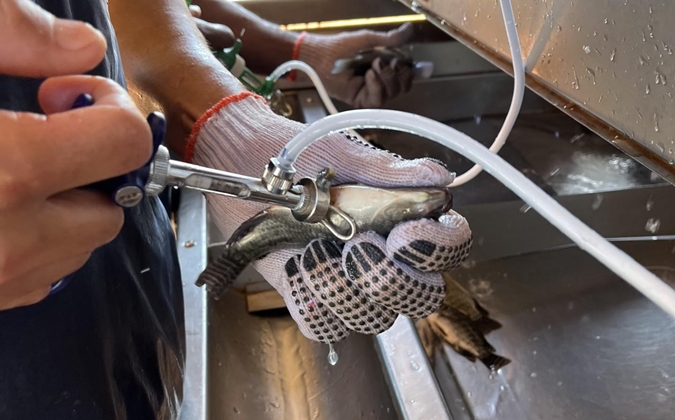
Mycobacteriosis could prove growing problem in aquaculture
Intensification of aquaculture and domestication of wild species are leading to an increased prevalence of mycobacteriosis in farmed aquatic invertebrates, according to a review of the disease’s emergence by an international team of researchers.
While mycobacteriosis is well-known in both terrestrial species and aquatic vertebrates, emergence among aquatic invertebrates is a relatively new phenomenon, they explained in Microorganisms.
The review pointed to a number of examples where the disease has been observed in mollusks, crustaceans and benthic invertebrates such as sponges, as well as economically important species including whiteleg shrimp, giant freshwater prawn, redclaw crayfish, eastern oyster and Atlantic sea scallop.
There are a number of Mycobacterium species, but the most common affecting both aquatic invertebrates and vertebrates is M. marinum, they explained, which is active in both freshwater and marine environments.
Disease manifests differently in invertebrates compared to fish: Whereas examination of infected fish will invariably find either dermal ulceration or white nodules on internal organs, most invertebrates will show no external signs, though behavioural clues such as lethargy or loss of equilibrium may be present.
Warmer waters could aggravate issues
The researchers suggested that the impact of mycobacteriosis in farmed aquatic invertebrates may currently be underestimated — and that the issue may increase in severity due to climate change.
“Aquatic invertebrates have to survive and adapt to environmental stresses. Temperature change may lead to changes in membrane lipid ordering and, in the case of elevated temperatures, may lead to protein unfolding and denaturation. If these alterations are not corrected rapidly, the functions, and possibly survival, of the stressed organism will be at high risk,” they said.
“In this situation, both the pathogen and the host are physiologically tied to the environment in which they live and have an optimal temperature range for survival. In cultured aquatic invertebrates, disease outbreaks are often related to husbandry factors such as poor water quality, inadequate water temperature, high stocking density or handling.”
Treatment options limited
There is currently no treatment available for mycobacteriosis in aquaculture, they stressed, with facility disinfection the only available option — though early response to the threat of disease has been aided by improved diagnosis through molecular methods. In particular, the ITS gene has been recognised as useful in differentiating between different Mycrobacterium species, they noted.
The researchers explained that pathogenic aquatic species rarely affect humans, but some cases have occurred after exposure to infected surfaces following trauma, or in those with suppressed immune responses. Where disease has arisen, long courses of antibiotics and removal of infected tissue have been required, they explained.
“Handling infected marine species is the main source of infection for man, especially aquarists, aquafarmers, fishermen and people who work in the processing of aquatic invertebrates, and they should be cautioned about contacting potentially infected invertebrates or fomites,” they advised.
To read the full article published in Microorganisms, click here.
Posted on: March 17, 2021






